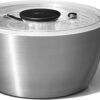Stay Satisfied on a Low-Calorie Diet
“`html
Introduction
Staying satisfied on a low-calorie diet can be challenging, but it is entirely achievable with the right strategies. A low-calorie diet typically involves consuming fewer calories than your body needs to maintain its current weight. This approach is often used for weight loss, but it can also provide numerous health benefits, such as improved cardiovascular health and better blood sugar control. The key to success lies in choosing nutrient-dense foods, managing hunger, and maintaining energy levels. This article will explore various techniques to help you stay satisfied and healthy on a low-calorie diet.
Understanding Caloric Needs
Before embarking on a low-calorie diet, it’s important to understand your caloric needs. These needs vary depending on age, gender, weight, height, and activity level. The Basal Metabolic Rate (BMR) is the number of calories your body requires to maintain basic physiological functions, such as breathing and digestion, at rest. To lose weight, you need to consume fewer calories than your total daily energy expenditure (TDEE), which includes your BMR and calories burned through physical activity.
Calculating Your Caloric Intake
To determine your ideal caloric intake for weight loss, calculate your TDEE using an online calculator or the following formula:
1. Calculate BMR using the Harris-Benedict equation:
– For men: BMR = 88.362 + (13.397 x weight in kg) + (4.799 x height in cm) – (5.677 x age in years)
– For women: BMR = 447.593 + (9.247 x weight in kg) + (3.098 x height in cm) – (4.330 x age in years)
2. Multiply your BMR by your activity level:
– Sedentary (little to no exercise): BMR x 1.2
– Lightly active (light exercise/sports 1-3 days a week): BMR x 1.375
– Moderately active (moderate exercise/sports 3-5 days a week): BMR x 1.55
– Very active (hard exercise/sports 6-7 days a week): BMR x 1.725
– Extra active (very hard exercise/physical job): BMR x 1.9
3. Subtract 500-1000 calories from your TDEE to aim for a safe weight loss of 0.5-1 kg per week.
Choosing Nutrient-Dense Foods
When following a low-calorie diet, it’s crucial to prioritize nutrient-dense foods. These foods provide essential vitamins, minerals, and other nutrients with relatively few calories. They help maintain health and prevent nutrient deficiencies while keeping you full.
Fruits and Vegetables
Fruits and vegetables are excellent choices for a low-calorie diet because they are high in fiber and water content, which help promote satiety. Include a variety of colorful fruits and vegetables in your meals to ensure a wide range of nutrients. Leafy greens, berries, citrus fruits, and cruciferous vegetables like broccoli and cauliflower are particularly nutrient-dense.
Lean Proteins
Protein is a vital macronutrient that supports muscle maintenance and repair. It also has a higher thermic effect than carbohydrates and fats, meaning your body burns more calories digesting protein. Opt for lean protein sources such as chicken breast, turkey, fish, tofu, tempeh, beans, and legumes. Incorporate a source of protein in every meal to help control hunger.
Whole Grains
Whole grains are an excellent source of complex carbohydrates and fiber, which provide sustained energy and promote satiety. Choose whole grains like quinoa, brown rice, oats, and whole wheat bread over refined grains to maximize nutrient intake.
Healthy Fats
While fats are higher in calories than proteins and carbohydrates, they are essential for hormone production, brain function, and nutrient absorption. Incorporate healthy fats, such as avocados, nuts, seeds, and olive oil, in moderation to support overall health and enhance meal satisfaction.
Managing Hunger on a Low-Calorie Diet
Managing hunger is crucial for adherence to a low-calorie diet. Several strategies can help you control hunger and prevent overeating.
Eat Regular, Balanced Meals
Skipping meals can lead to intense hunger and overeating later in the day. Instead, aim to eat regular, balanced meals that include protein, complex carbohydrates, and healthy fats. This balance helps stabilize blood sugar levels and keeps hunger at bay.
Prioritize Fiber Intake
Fiber is a type of carbohydrate that the body cannot digest, and it plays a key role in promoting fullness. Foods high in soluble fiber, such as oats, legumes, and apples, form a gel-like substance in the stomach, slowing digestion and prolonging satiety.
Stay Hydrated
Sometimes, thirst can be mistaken for hunger. Ensure you are drinking enough water throughout the day to stay hydrated and help control appetite. Aim for at least 8 cups (2 liters) of water daily, adjusting based on activity level and climate.
Practice Mindful Eating
Mindful eating involves paying full attention to the eating experience, savoring each bite, and recognizing hunger and fullness cues. By eating slowly and without distractions, you can better tune into your body’s signals and prevent overeating.
Maintaining Energy Levels
Low-calorie diets can sometimes lead to low energy levels, making it difficult to stay active and motivated. Here are some tips to maintain your energy while reducing calorie intake.
Balance Macronutrients
Ensuring each meal contains a balance of protein, carbohydrates, and fats can help maintain energy levels throughout the day. Carbohydrates provide quick energy, while proteins and fats offer sustained fuel.
Incorporate Regular Physical Activity
Exercise is not only a crucial component of weight loss but also helps boost energy levels and improve mood. Aim for at least 150 minutes of moderate-intensity exercise or 75 minutes of vigorous-intensity exercise each week.
Get Adequate Sleep
Lack of sleep can lead to increased hunger and decreased energy levels. Strive for 7-9 hours of quality sleep per night to support weight loss and overall well-being.
Manage Stress
Chronic stress can lead to increased cravings and overeating. Incorporate stress-reducing activities such as yoga, meditation, or deep breathing exercises into your daily routine to support both your mental and physical health.
Conclusion
Staying satisfied on a low-calorie diet requires careful planning and a focus on nutrient-dense foods. By understanding your caloric needs, choosing the right foods, managing hunger, and maintaining energy levels, you can achieve your weight loss goals while enjoying a healthy and satisfying diet. Remember, the key is to create sustainable habits that support long-term health and well-being. With dedication and the right strategies, you can successfully navigate a low-calorie diet and enjoy the benefits of a healthier lifestyle.
“`















Add comment